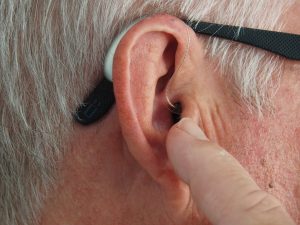- Nasal Endoscopy: After topical anesthetic and decongestant agents are sprayed in the nostrils, a small, fiberoptic camera is placed into your nose to better evaluate the anatomy of your nasal airway and decide if VivAer is right for you.
- Cottle Maneuver: This is a test to evaluate for nasal valve obstruction. Place two fingertips on each side of your nose and gently press and pull outward. A positive cottle sign is noted if there is improvement in your breathing when performed.
- NOSE Score: This is a brief questionnaire we have you fill out in the office to assess the severity of your nasal obstruction. It is performed at your consultation appointment as well as post procedure for comparison.
Uncategorized
Managing Your Allergies
- Nasal Saline Rinses: Also known as a Neti Pot. These are a fantastic way to irrigate your nasal cavity and sinuses to help remove unwanted mucous and allergens from the nose.
- Topical Nasal Steroids: Flonase (Fluticasone) is a commonly known topical nasal steroid spray that helps decrease nasal congestion, postnasal drip, and nasal obstruction. There are other types, both over the counter and prescription, that can improve your allergic symptoms as well. Please speak with your healthcare specialist to find out which would work best for you and your specific symptoms.
- Oral Antihistamines: These typically come in either 12 or 24 hour form and are taken once or twice daily to help combat allergy symptoms. Speak with your healthcare specialist to decide which antihistamine is best for you!
- Non-Medical Treatments: It is very important to be proactive this summer season when planning outdoor activities. You may benefit from wearing a mask if you know you will be outside for a long interval of time. To help combat allergies inside your home, we highly recommend air-purifiers, dust mite covers, and routine cleaning/dusting.
Is Acid Reflux Causing My Symptoms?
The stomach naturally produces acid to digest food. Sometimes this acid can make its way up the esophagus and into the throat, a condition called Laryngopharyngeal Reflux (LPR). LPR often occurs without heartburn, making it difficult to diagnose, and is often considered a “silent” disease.
What are some symptoms of LPR?
- Hoarseness, especially in the morning
- Chronic throat clearing or persistent cough
- Chronic sore throat
- A feeling of something caught in the throat (also known as globus)
- Excessive mucus/post-nasal drip
- Difficulty swallowing
- Restless sleep
How do we diagnose LPR at Montgomery County ENT Institute?
In order to properly evaluate your symptoms, we will use a camera to directly visualize your nose and throat (nasolaryngoscopy). This can be done in the office at the time of your visit with some topical anesthesia. This allows us to assess the cause of your symptoms. Signs of LPR in the larynx usually involve inflammation or redness around the larynx.
What is the treatment for LPR?
Typically treatment for LPR involves dietary changes and an over-the-counter Anti-Reflux medication. Here is a list of some foods to limit when suffering from LPR:
- Cigarettes
- Coffee
- Alcohol
- Peppermint, spearmint
- Tomatoes and tomato sauces
- Spicy foods
- Milk and milk products
- Orange juice
- Fatty foods
In addition to eliminating these foods, here are some additional tips to manage LPR:
- Eating smaller, more frequent meals
- Sleeping with your head elevated 4-6 inches
- Using a wedge pillow
- Placing a brick or block under the head of your bed frame
- Weight loss
Aren’t GERD and LPR the same thing?
Although GERD and LPR are related to acid produced from your stomach, they can be caused by different amounts and types of reflux. It’s possible to have GERD without LPR and to have LPR without GERD. Because of this, it’s important for an ENT professional to examine you.
What if my symptoms don’t go away?
Depending on the severity of symptoms and the in office exam, some patients require longer treatments than others. If symptoms are not improving, you might require an evaluation by another specialist (like a gastroenterologist).
How can Montgomery County ENT Institute help?
If you or anyone you may know is experiencing symptoms that might be from acid reflux or “silent” reflux, contact our office today for a thorough evaluation of your throat.
OTC Hearing Aid Q & A

Common Causes of Vertigo
- Benign Paroxysmal Positional Vertigo (also known as BPPV): This occurs when small crystals in the inner ear are displaced. Symptoms are brought about by positional movements – turning quickly, rolling over in bed, or bending over.
- Meniere’s Disease: This fluid imbalance in the inner ear may also cause vertigo. Vertigo episodes may also be associated with hearing loss, ear fullness, and tinnitus (hearing a noise in your ear). Symptoms may fluctuate.
- Deep Wax Buildup: Sometimes if there is a wax (cerumen) buildup up against the eardrum, some people can have problems with their balance as well as ear discomfort.
- Other ear related causes of vertigo: ear infections, labyrinthitis, vestibular migraines.
- Other non ear related causes of vertigo: low blood pressure, medications, head injury, stroke, tumor, or others.
How to Fight Spring Allergies
March 20th is the official first day of spring! As we are excited for warmer weather and flowers blooming, some people are bracing themselves for a flare of allergies. Spring allergies can last anywhere from early March to beginning of June. When plants grow and bloom, they also produce pollen. Pollen from trees, weeds, and grasses can circulate in air and spread around with the wind or a breeze. Inhaling these can trigger a response in our body such as runny nose, postnasal drip, itchy eyes. If you suffer from Spring Allergies, here are are some helpful tips to help fight them this spring!
- Start taking your allergy medications before the spring allergy season begins (nose sprays or antihistamines)! This will help prevent manage symptoms by reducing your reaction before it starts.
- Remove allergen sources from your home the best you can. Keep your home and car windows closed. Use air purifiers to help circulate the air. Use central air conditioning.
- Use saline nasal rinses after a day of being outside (we love the NeilMed saline rinses).
- Change and wash your clothes after being outdoors.
- If doing yardwork outside, wear a mask and gloves to minimize direct exposure to possible allergens.
- Avoid peak pollen times, usually around 5-10 a.m. and at dusk. Pollen is also higher on warm, breezy days.
- Clean your pets with a towel when they come inside to reduce the spread of pollen.
What are some of the symptoms of allergies? Symptoms may vary from person to person, but can include some of the following: sneezing, stuffy nose, runny nose, itchy/water eyes.
How do I know if I have allergies? If you experience some of the symptoms of allergies listed above, it’s possible that you suffer from allergies. Formal diagnosis by an experienced healthcare professional is needed to confirm that you have allergies.
How can Montgomery County ENT help with your allergies? Here at Montgomery County ENT Institute, we discuss your symptoms and complete a thorough physical exam. We offer in-office formal skin allergy testing. This allows you to understand what allergies you have and at what time of the year they are likely to bother you. From there, we come up with a plan to treat your allergies and symptoms. This may include over the counter medications, nose sprays, or immunotherapy.
5 Ways to Prevent Nosebleeds this Winter
 Fall is officially over and winter is here! With this change comes cold weather, chilly winds, and less humid air which means it’s the season of nosebleeds. Nosebleeds, also known as epistaxis, are most commonly caused by dry air. Nosebleeds occur when the blood vessels that line the inside of your nose break and bleed. Therefore, it’s important to keep the inside of your nose moist. Here are 5 helpful tips to prevent nosebleeds during this holiday season!
Fall is officially over and winter is here! With this change comes cold weather, chilly winds, and less humid air which means it’s the season of nosebleeds. Nosebleeds, also known as epistaxis, are most commonly caused by dry air. Nosebleeds occur when the blood vessels that line the inside of your nose break and bleed. Therefore, it’s important to keep the inside of your nose moist. Here are 5 helpful tips to prevent nosebleeds during this holiday season!
- Humidifier: Purchase a small humidifier to moisturize the air and your nasal membranes while you sleep. You can also use it during the day. Be sure to clean it regularly so mold and bacteria doesn’t grow.
- Saline nasal spray: Spray 2-3 squirts of saline spray in each nostril multiple times per day to keep the nasal mucosa moist. Examples of brands include Ocean™, Deep Sea™.
- Don’t pick your nose: Any picking or scratching of the nose can cause irritation to the mucosa and rupture a blood vessel, leading to a nosebleed. It could be helpful to trim your nails in case you accidentally scratch your nasal mucosa.
- Saline Gel: In addition to saline spray, nasal gels can also help keep your nasal mucosa moist. Examples of brands include Ayr™, Rhinase™
- Use nasal sprays correctly: Prescription nasal sprays can cause dryness when sprayed towards the septum (middle of the nose). This can increase your risk of nosebleeds. It’s important to use your right hand to spray in your left nostril and your left hand to spray in your right nostril.
Our office is always here to help! If you have any additional questions or concerns or if you are struggling to deal with nosebleeds this winter, call our office to schedule an appointment.
Practice Profiled in Suburban Life Magazine
Our practice was recently profiled in Suburban Life Magazine! Please click on the following link to see the article: montgomery-county-ent-institute-in-suburban-life-magazine
Dealing with Facial Skin Cancer
Dealing with a skin cancer can be a very stressful experience. When the cancer is on the face, it may pose serious functional and cosmetic issues. Facial skin cancers can be removed and repaired by a Facial Plastic Surgeon. Sometimes the cancer may be removed with a procedure called Mohs Surgery, performed by a specially trained Dermatologist called a Mohs Surgeon. Repairing the resulting defect may require a Facial Plastic Surgeon.
Dr. Ondik is a Board Certified Facial Plastic Surgeon and has extensive experience in repairing all areas of the face, including total nasal reconstruction. Dr. Ondik will coordinate with your Dermatologist or Mohs Surgeon to remove and/or repair the resulting skin cancer defect. He will spend time explaining the repair options. Each skin cancer repair is carefully chosen to restore the function of the facial component and ensure the most cosmetically superior result.
Liquid Rhinoplasty
While there has been an explosion of injectable fillers being used for facial lines and wrinkles, many patients are not aware that these same fillers can be used to improve the shape of the nose. The procedure is called “liquid rhinoplasty” and uses injectable fillers to smooth out depressions or hollows. In some cases the filler can also be used to help camouflage small bumps or humps on the nose. The procedure isn’t permanent, but the results may last up to a year or slightly more. It may be perfect for the patient that has a small nasal imperfection that isn’t interested in surgery.
